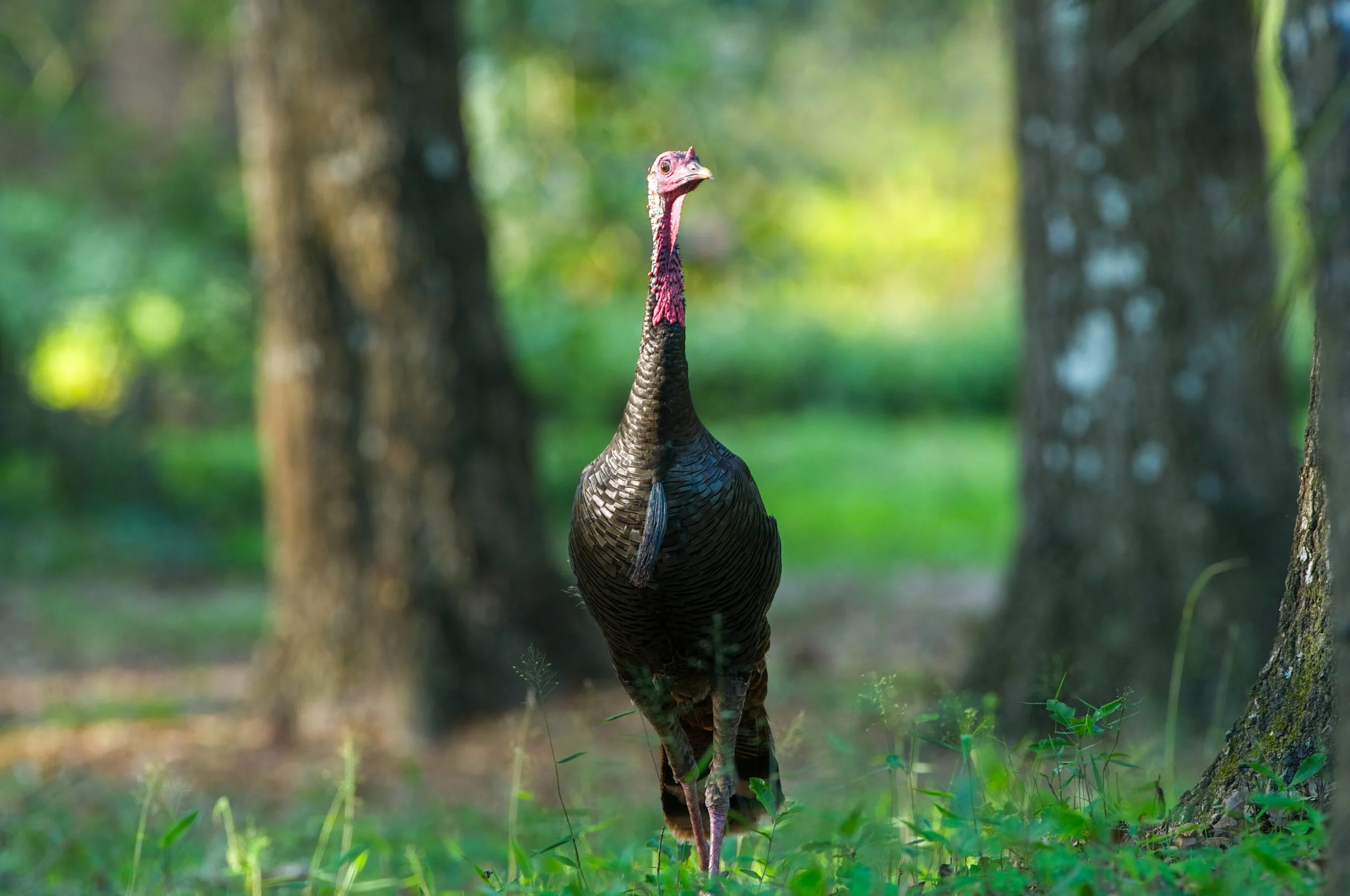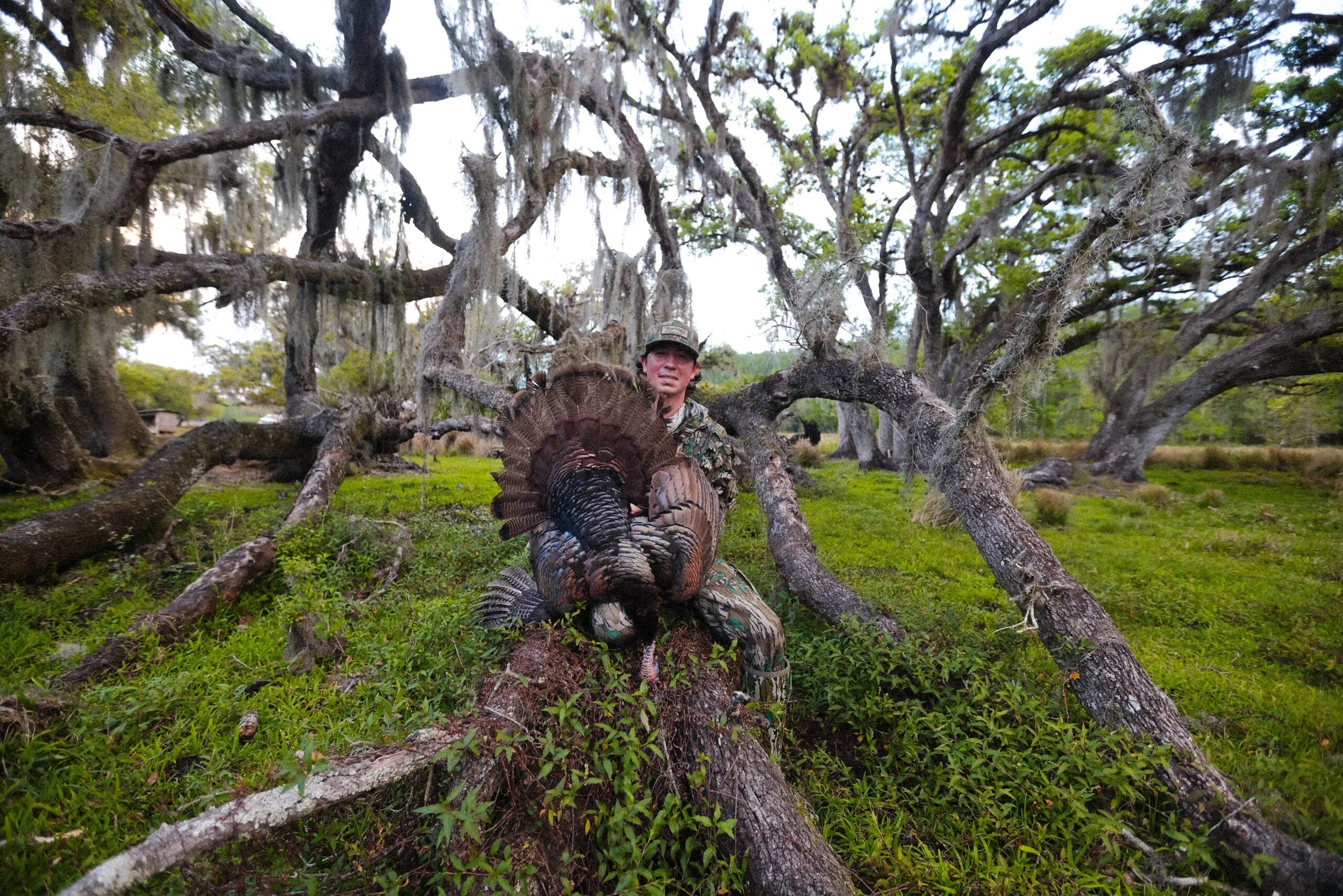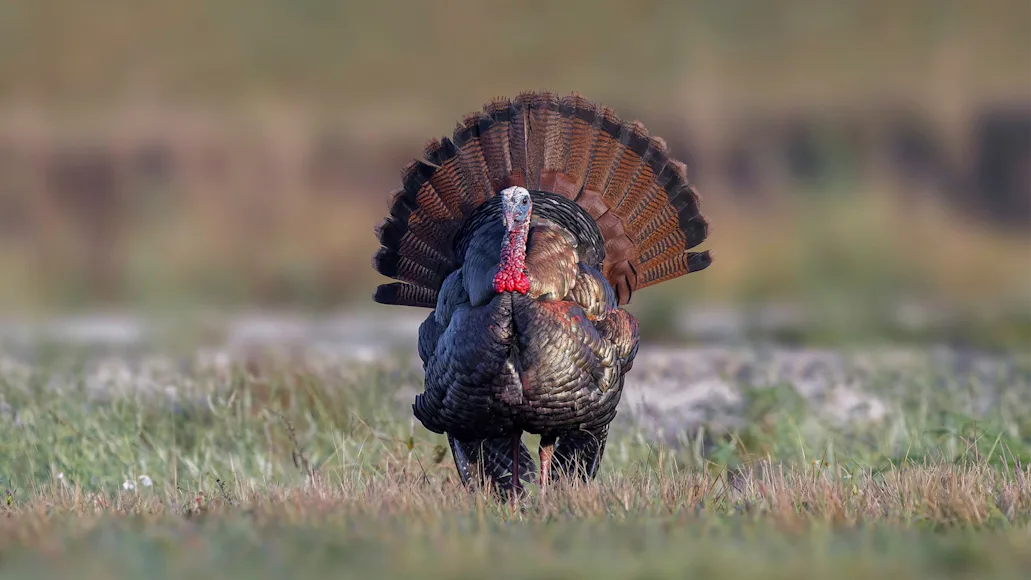The Osceola turkey is one of, if not the hardest, subspecies of wild turkey to hunt due to its limited range in Central and South Florida. Osceola’s wary nature and Florida’s crowded public hunting areas make it even more difficult for turkey hunters to find and kill a mature gobbler. The good news is that the South Florida turkey season—which runs from March 2nd to April 7th in 2024 south of State Road 70 on lands outside the WMA system—is the first spring turkey season to open across the entire country. So, whether you’re looking to complete your wild turkey grand slam or want an early start to your season, South Florida’s Osceola turkey offers a fun challenge for hunters. Just remember to bring your sunscreen and bug spray. Here’s everything else you need to know about the Osceola turkey.
Appearance
The least numerous of the four better-known North American subspecies, the Osceola is also the smallest in size and weight. Gobblers typically weigh less than 20 pounds, and hens between eight and 10 pounds. Named after the great Seminole chief, the Osceola, like the Rio, is a long-legged bird.
Though similar in appearance to the Eastern, the Osceola, also known as the Florida turkey, is more black overall, even down to the bird’s wing feathers, which show only a fraction of the contrasting white markings commonly found in the other subspecies. Osceola’s rump feathers and tail tips are often Eastern-like, though the tail tips are usually much more narrow than on the Eastern. Another characteristic of the Osceola gobbler is long, sharp spurs that can reach lengths of up to two inches. It’s thought that these dagger-like spurs are due in part to the absence of rocks or other natural grinding materials that can often work to wear down or abrade the spurs of toms found elsewhere in the country.

Range and Habitat
If you’re looking to wrap your spring tag around the scaly leg of an Osceola gobbler, you have three choices—Florida, Florida, and Florida. According to the state’s Fish and Wildlife Conservation Commission (FWC), Osceola turkeys are only found in peninsular Florida. Across the panhandle, Osceolas interbreed with Eastern wild turkeys. Hunters can find pure-strain Osceola turkeys everywhere below the panhandle. Florida wild turkeys are hardwood birds and prefer big open woods. They can also be found in piney woods, palmettos, swamps, pine savannas—and toms like to strut in open areas like forrest clearings.
Population Status
While the Florida Fish and Wildlife Conservation Commission (FWC) doesn’t have an exact number of Osceolas in the state, the population is believed to be stable, with consistent harvest numbers over the last several years. Biologists and representatives of the National Wild Turkey Federation (NWTF) are in the midst of an ongoing research project in Florida designed to “better understand (Osceola) hens’ choices in habitat selection, nesting schedules, and nest site selection.” It’s hoped that the information gleaned from this research, which includes trap and transfer, along with fitting several birds with GPS-VHS tracking “backpacks,” will allow wildlife biologists and other professionals to better manage habitat, not only for wild turkeys but for a variety of game and non-game species alike.

Hunting Osceola Turkeys
While Florida does offer some wild turkey hunting on public lands, primarily throughout the southern half of the state, the vast majority of Osceola gobblers are harvested each Spring on private land. Many of those with the assistance of established and reputable guides and outfitters. That’s not to say public land longbeards aren’t possible, as they certainly are; however, successfully tagging one of these long-legged toms is typically the result of several variables that include:
Research and Pre-Season Prep
The more you know about the Osceola before stepping foot on his turf, the better. They are shy and secretive birds, often overly cautious due in large part to the almost infinite list of turkey-eating predators that live in South Florida, humans included. They will often come to a call slowly, if at all. In fact, Osceola gobblers will ‘stand their ground,’ waiting for the hen to show herself or go to him. Knowing where the gobblers live, where they travel, and what they will and won’t do is all part of pre-season preparation.
Scouting
Ask any good turkey guide, and he’ll tell you that 75 percent or more of his time is spent scouting. That’s what a guide does, and that’s what you should be doing in the days before the season opener. Understand roost trees, travel routes, rut zones, dusting areas, or preferred food sources favored by hens. The more you know about Ole Tom, the better prepared you’ll be come opening day.
Patience
I’ve hunted in South Florida a couple of times since 1990, killing birds on each trip. It required a lot of hard work, a bit of luck, and a lot of mosquito repellent. South Florida is like nowhere else I’ve hunted Spring gobblers. Visibility is limited, it is usually hot and humid, and these sticky conditions will test your patience and commitment. That old gobbler isn’t in any hurry, and neither should you be. One of the best strategies for tagging an Osceola is to set up a ground blind and stake a pair of hen decoys in the ground after determining his morning path from Point A to Point B. Make yourself comfortable and call sparingly. Gobblers will often respond before going quiet and then appear when you least expect it.
Gear-Up
Hunters should be prepared for hot and humid conditions. Eighteen-inch snake-proof boots, or at the very least comfortable waterproof knee boots, are a must. Make sure to bring bug repellent or, better yet, a ThermaCELL unit. A small selection of your favorite diaphragm calls, a pot call, an owl hooter, and a crow call, lightweight binoculars like Maven’s B.3 8×30, camouflage stow-away raingear, and a headnet/facemask.
Read Next: The 5 Wild Turkey Subspecies and Where To Hunt Them
Cooking Osceola Turkey
My favorite wild turkey recipe is perhaps the simplest. I slice the breast into strips about ¼-inch thick, give each finger an egg/milk bath, roll in my wife’s version of Pride of the West breading, and deep-fry at 360 degrees in canola oil until golden brown. My dip? A mix of blue cheese dressing and tabasco sauce. And don’t forget the celery sticks.


